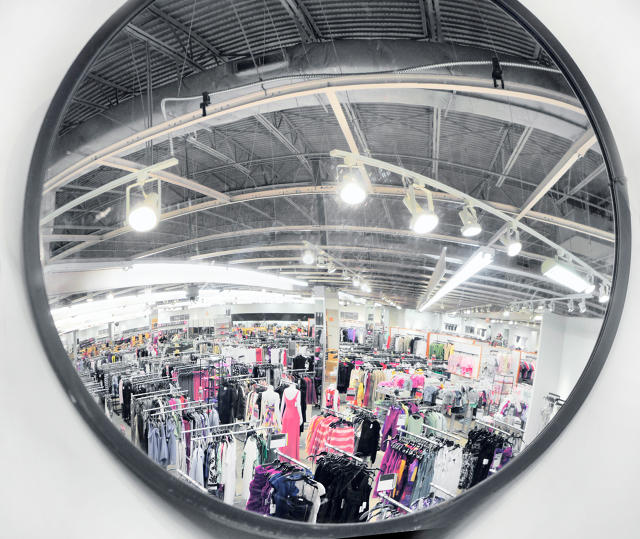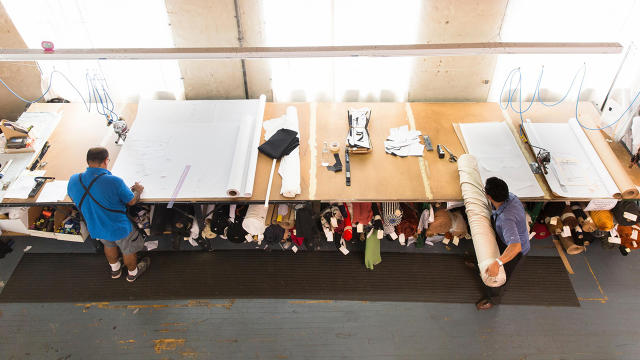HOW GLOBAL WARMING IS ALREADY CHANGING THE FASHION INDUSTRY
IT WASN’T JUST YOU; THE ENTIRE FASHION WORLD FELT THE IMPACT OF A WARM WINTER. AND HERE’S WHAT THEY’RE DOING ABOUT IT.
While some politicians continue to deny climate change, fashion retailers are already feeling the burn of a warming winter climate.
Talking to Co.Design, a Patagonia spokesperson called climate change “a serious crisis” for its business. And while retailers like J.Crew, H&M, and Nordstrom decline to comment, the numbers speak for themselves. Uniqlo, H&M, and Gap all announced major seasonal shortfalls this year, and Macy’s is actually cutting more than 4,500 jobs following slumpish holiday sales, blaming 80% of its revenue shortcomings on cold-weather goods like jackets, hats, and scarves that just didn’t sell.

“People don’t want to talk about anything that’s a problem,” says Valerie Steele, director and chief curator of The Museum at the Fashion Institute of Technology, “because it indicates maybe they’re not doing as great as they think they should be.”
Yet there are experts in the fashion industry who are already adapting-and who spoke openly about how climate change is transforming their business models, their designs, and the very notion of seasonal fashion itself. Here’s how.
Clothing That’s Ordered Late, And Shipped Even Later
It’s a perfectly common practice for winter fashion to hit shelves in July. This incredible lead time is just the final step in an even greater logistical operation you don’t see: Those heavy pieces may have hit catwalks and started the journey to production anywhere from 6 to 18 months before they arrived in a store.
And yet, for all this preplanning, nobody buys a winter coat in the sweltering days of summer-and some brands are beginning to question the long lead time.
“Typically the way the industry is set up is a little odd, where you sell sweaters in July in anticipation of September. It becomes this game of racing to get a fresh product a little too early I’ve always thought,” says Yael Aflalo, Founder and CEO of fast US fashion brand Reformation. “Most people go to get sweaters when it’s cold outside. I don’t buy sweaters in July. I buy sweaters when it’s cold, and, oh my god, I need sweaters!”
Instead, Aflalo has built her business on limited-run clothing, produced only four to six weeks before it reaches shelves. This year, as warm weather stuck around, the company’s unusually short production pace paid off and allowed it to quickly reassess how much winter stock it really needed. “We had our offering of fall stock, and had to scale back what our purchases were for [cold] weather, and shift to season-less items,” she says. “We were able to react and it wasn’t that detrimental, but it still leaves a gap, a certain amount of sales in outerwear or sweaters, they were just reduced.”

In other cases, retailers have capitalized on delays that had summer items arriving in fall. Rebecca Minkoff admits that her business had a lucky break in this seasonal scheduling. While they had planned to ship a suede jacket in July, a delay in the tannery pushed it back to October and November. “But that timing was perfect,” she says, because the mid-weight jacket happened to be the natural accoutrement to 2015’s warm fall.
To anyone outside the fashion industry, the idea of garments that are produced during the season in which they’ll be worn seems obvious and logical-especially when it’s increasingly tough to know what weather the next season has in store. In fact, that’s why Minkoff is changing the timing of its seasonal shows. Instead of wooing retailers several seasons in advance to place speculative orders on what people might want months in the future, Minkoff is running consumer-facing runway shows closer to actual ship dates.
Whereas traditionally, designers will show their fall line in February-seven to eight months before anyone will wear it-Minkoff is showing spring in February, just a month before the season starts. “More and more people are shipping in season,” Minkoff says. “That’s why we started to show in season.” As an added bonus, these narrower show-to-ship dates reduce what she calls “image fatigue,” or what happens when customers become bored of a fashion long before they can even buy it. According to Minkoff’s new show strategy, even consumers-not just retailers-have the option to buy the entire line right then.
Not every retailer will be able to change its seasonal show schedule. As Minkoff points out, larger, more traditional retailers will need to learn how to juggle inventory across regions. If a city is colder than expected, these retails should have systems for getting those stores the cold goods, ASAP. “To be able to be more limber, store to store shipping is in [everyone’s] best interest,” Minkoff says. “That’s the easiest shift I could see the industry making.”
Designing For A Future When Winter Is Warm
But juggling when to sell the right seasonal wear is only part of the issue. We’re talking about a world in which Boston’s frozen winters will soon feel more like the slightly chilled Januaries of Georgia, or when erratic climates bounce between 60 and 6 degrees with just a day or two in between. The more obvious shift may not be the timing of clothing sales, but the design of the clothing itself.
To some extent, the global, jet setting economy has already pushed designers to consider new, more environmentally-flexible fabrics. “We’ve been talking now for 20 years of trans-seasonal fashion,” Steele says. “Between everybody traveling so much, there’s a lot of things like lightweight wool that goes from tropics to winter places, or smart fabrics that can respond to clues in the event to get warmer or cooler. Some of the big companies interested in techno luxury, like Venia, are exploring those.”

Of course, adapting doesn’t necessarily need to be as complicated as inventing in super-advanced fabrics. For Reformation, it was a matter of skewing towards the right textiles and designs. “I think the weight of the materials is going to be what’s more in flux,” Aflalo says. “People are going to be more opting for things like medium weights.” And as the weather stayed warmer than expected this fall, the company countered by releasing a more balanced assortment of middle weight items, “more things like dresses, basic tops, more jeans, more things that are not as dependent on weather,” Aflalo says. “The middle of the road stuff.”
Likewise, Aflalo sees heavy-weight garments, like a polar fleeces, as higher risk items she’ll probably produce less of in the future. As a retailer, “you might not buy 1000,” she says. “You’re going to hedge your bet and buy 400.” If it gets really cold, the 400 will disappear. If it doesn’t, at least you’re not sitting there with a gigantic pile of overstock fleece.
But while Aflalo’s immediate midweight solution seems clever, or even obvious, it bucks a tradition upon which the $1.2 trillion global industry is founded. “Since the 17th century we’ve had the idea of fashion seasons. Spring, summer, fall, winter,” Steele says. “This is something that’s been built in for a very long time to the structure of the fashion system.”
If our most extreme cold weather gear is cut from the equation, or if everyone can wear shorts on Christmas, what defines winter fashion? What natural mechanism tells us that it’s time to get to the store and splurge on a new wardrobe? It’s a question the industry has yet to answer. Ironically, even in warmer climates, traditional winter fashion may continue to define warm winter fashion. The heaviest of coats and sweaters, when produced in more limited supplies, will inherently become the statement pieces of the season, the rarer luxury garments for those who can afford to do more than dress in layers 12 months a year.
And for the optimists, winter seasonal items may no longer designed around the bulky, functional necessity of warmth, meaning they could be defined by a whole new aesthetic. “I guess I’m a believer in human creativity,” Aflalo says. “When there’s less ability to be creative, then you figure out how to be more creative. Humans are remarkable creatures like that.”
[Top Photo: Stan Honda/AFP/Getty Images]
ÊÊÊ